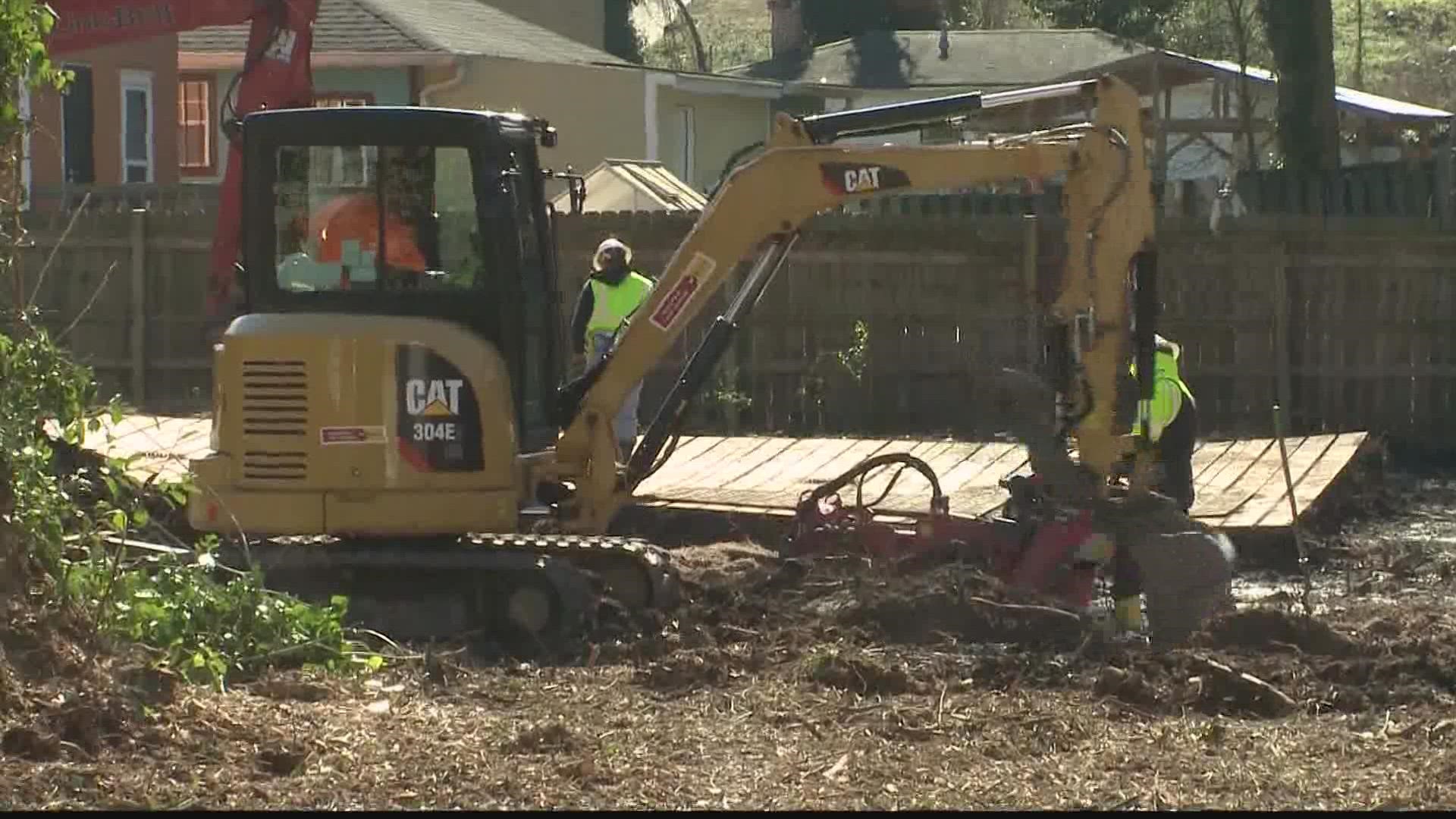ATLANTA — Putting into stark relief the inequities still faced by residents of Atlanta's historically Black Westside, a swath of residential area where elevated levels of lead have been found on hundreds of properties was deemed a toxic Superfund site.
The U.S. Environmental Protection Agency announced Friday the new designation for an area essentially composed of the Vine City and English Avenue neighborhoods.
Properties around both neighborhoods have been undergoing testing for high lead levels since 2018, when industrial smelting waste ("slag") was discovered on two lots on Elm Street.
Since then, the EPA has sampled 951 properties and determined at least 377 require cleanup - with 116 of those cleaned so far.
The official addition of the neighborhoods to Superfund National Priorities List will free up increased federal funding for the "long term cleanup of hazardous material contamination."
The neighborhoods become one of just a handful of Superfund sites in Georgia, and the only one in metro Atlanta. They're also unusual as residential communities - most Superfund sites are decommissioned industrial plants, military bases or literal landfills.
- VINE CITY AND ENGLISH AVENUE RESIDENTS: The EPA says it is offering residents free soil sampling within the designated area. Anyone interested can call 678-662-8603 or visit www.epa.gov/superfund/westside-lead for more information.
The nearest Superfund site to the Westside, for example, is a landfill in Polk County. Others in the state include a former Naval weapons plant in Macon and a landfill at Robins Air Force Base in Warner Robins.
The "slag" first found by Emory researchers in the neighborhoods is a smelting byproduct, and 11Alive's Joe Henke reported back in 2020 that when land in the Westside area was leveled to build houses decades ago, homes were built on top of the lead waste.
Emory professor Eri Saikawa, whose research team found the first elevated lead levels, told Atlanta's NPR affiliate WABE in 2020 she was "very taken aback" by the discovery.
"My expertise has been in air pollution and emissions. And this was supposed to be a very small project... now we found a problem that we think is extremely important and hasn’t been taken care of by other researchers," she said.
On Friday, a community gardener who teaches gardening to children in the area, Doris Crayton, told 11Alive's La'Tasha Givens that given her work she was especially concerned about the potential presence of lead in the soil and its impact on kids.
"I do think that it's a very bad thing that it was here for so long and nothing was done about it, so now I'm really glad that the lead is being removed," she said.
A resident, Max Screegs in Vine City, said his property had been cleaned up and described how it had taken about a week.
"So they went though and cut down the trees and removed the stumps out of the ground and went through down about six inches deep," he said, leaving him with Bermuda grass that they came back, watered and checked up on periodically.
The Westside neighborhoods are one of 12 new additions to the Superfund National Priorities List this year. EPA Administrator Michael S. Regan said roughly two-thirds of the new sites were located in "overburdened or underserved communities."
“No community deserves to have contaminated sites near where they live, work, play, and go to school,” Regan said in a statement. “EPA is building a better America by taking action to clean up some of the nation’s most contaminated sites, protect communities’ health, and return contaminated land to safe and productive reuse for future generations.”
According to the EPA, nearly 2,100 properties between the borders of Wheeler St. to the north, Martin Luther King Jr. Dr. to the south, Joseph E. Lowery Blvd. to the west and Northside Dr. to the east need sampling.
So far they've sampled 951 of those properties and have been granted access to sample a further 43, meaning the agency still needs permission to sample more than 1,000 properties.

